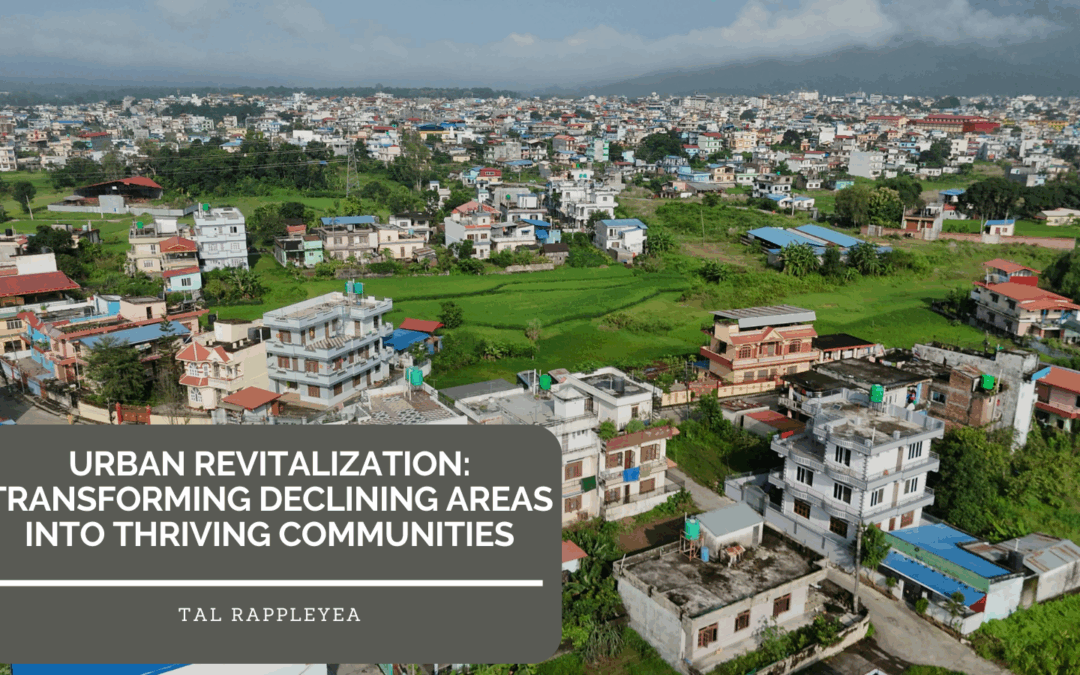Urban revitalization is a multifaceted process that aims to breathe new life into declining or neglected urban areas, transforming them into vibrant and sustainable communities. As cities evolve and demographics shift, certain neighborhoods may experience economic decline, population loss, and physical deterioration. Urban revitalization seeks to address these challenges by leveraging various strategies to revitalize neighborhoods and create opportunities for growth and development.
Understanding Urban Decline
Urban decline can result from a combination of factors, including economic shifts, population changes, disinvestment, inadequate infrastructure, and social issues such as crime and poverty. As a result, once-thriving urban neighborhoods can become blighted areas characterized by vacant buildings, deteriorating infrastructure, and a lack of economic activity. These areas often suffer from a negative stigma, further exacerbating the challenges they face.
Key Strategies for Revitalization
- Investment in Infrastructure: Upgrading infrastructure such as roads, utilities, public transportation, and green spaces is crucial for revitalizing urban areas. Improved infrastructure enhances the livability of neighborhoods, attracts investment, and stimulates economic activity.
- Mixed-Use Development: Encouraging mixed-use development, which combines residential, commercial, and recreational spaces, can help create vibrant and walkable neighborhoods. Mixed-use developments provide residents with access to amenities and services while supporting local businesses and fostering a sense of community.
- Affordable Housing Initiatives: Affordable housing is essential for ensuring that revitalized neighborhoods remain accessible to a diverse range of residents. Implementing affordable housing initiatives, such as subsidies, tax incentives, and inclusionary zoning policies, can help address housing affordability challenges and prevent the displacement of existing residents.
- Historic Preservation: Preserving historic buildings and landmarks can contribute to the unique character and identity of urban neighborhoods. Historic preservation efforts not only enhance an area’s aesthetic appeal but also support tourism, cultural heritage, and economic development.
- Community Engagement and Empowerment: Meaningful community engagement is vital for the success of urban revitalization initiatives. Involving residents, local organizations, and stakeholders in the planning and decision-making process ensures that revitalization efforts are responsive to the community’s needs and priorities.
- Public-Private Partnerships: Collaboration between government agencies, private developers, nonprofits, and community organizations is often essential for implementing large-scale revitalization projects. Public-private partnerships can leverage resources, expertise, and funding to address complex urban challenges and achieve shared goals.
Success Stories in Urban Revitalization
Numerous cities around the world have successfully revitalized declining urban areas, demonstrating the effectiveness of strategic planning and investment. For example, the High Line in New York City transformed an abandoned elevated railway into a linear park and recreational space, revitalizing the surrounding neighborhoods and attracting millions of visitors annually.
Similarly, the regeneration of London’s Docklands transformed former industrial sites into thriving residential, commercial, and cultural hubs, catalyzing economic growth and revitalizing waterfront areas.
Conclusion
Urban revitalization is a dynamic and ongoing process that requires vision, collaboration, and sustained commitment from all stakeholders. By addressing the root causes of urban decline and implementing targeted strategies, cities can unlock the potential of neglected neighborhoods and create inclusive, vibrant communities where residents can live, work, and thrive. As cities continue to evolve, urban revitalization will remain a critical tool for fostering sustainable growth, social equity, and resilience in urban areas around the world.
